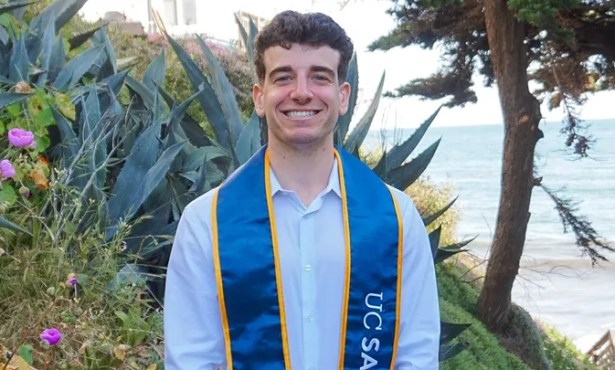Long-Term Gang Response Unveiled
Five-Year Plan Calls for New Gang Czar, Intervention Specialists
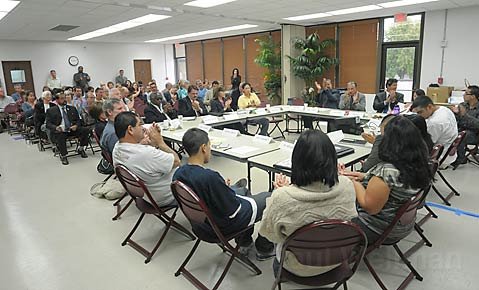
About 50 people-South Coast politicians, law enforcement officials, school administrators, community activists, and non-profit representatives who’ve spent the last year grappling with gang violence-gathered at the Franklin Center on Santa Barbara’s Eastside Monday morning to embrace plans for a new five-year pilot project they hope will bring sustained focus, coordination, and resources to the issue. The meeting’s location proved unintentionally strategic, just spitting distance from the Pennywise Market, regarded by law enforcement as an epicenter of Eastside gang activity. At its core, the new plan relies on one-on-one case management of gang members and at-risk youth coupled with cooperation, communication, and coordination between government agencies and nonprofits to help members of the target population pursue other paths.
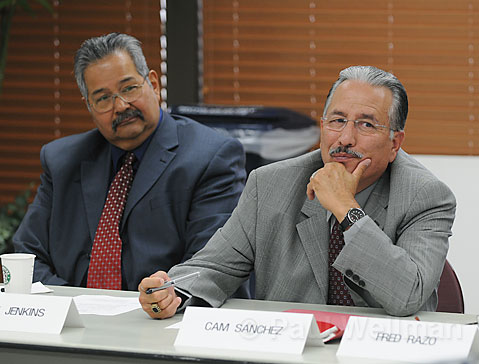
To accomplish this goal, the new plan will likely require two gang intervention specialists to funnel gang members and their families to appropriate agencies for help and then track their progress. (At its September 9 meeting, however, the Santa Barbara School District board voted to wait until September 12 to decide on hires. The two positions are projected to cost a total of $132,949 each.) Regional in scope, the proposed program would create two new South Coast commissions populated by elected officials and high-ranking government administrators from Santa Barbara, Goleta, and Carpinteria as well as the County of Santa Barbara, County Education and the Santa Barbara High School District. Additionally, the new program would entail the creation of a new executive position charged with ensuring that all involved agencies-public and private-are efficiently coordinating their efforts at gang prevention, intervention, and ultimately suppression. The position would also be responsible for raising the funds so the effort can be sustained even as the issue fades from the public spotlight.
While no dollars amount was discussed at Monday’s confab, several key participants estimated afterward that the entire enterprise would cost about a half-million dollars annually. Where that money would come from has yet to be determined. It will take several months before all the involved parties and jurisdictions can work out the final details, but it’s expected that an interim executive director will be appointed within the next month or two.
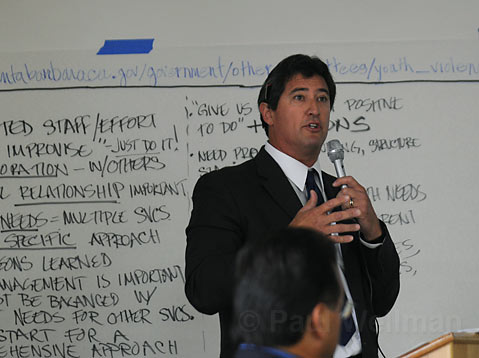
The City of Santa Barbara spearheaded this planning effort, spurred into action by the lethal stabbing of 15-year old Luis Angel Linares on State Street last March during an after-school gang brawl. Since then, gang violence has shown little signs of abating; another Santa Barbara teen was stabbed to death this July 4 during a waterfront rumble between rival gangs and less fatal skirmishes between east and west side factions have grown increasingly common. The hope is by cementing this new program into the very DNA of South Coast government bureaucracies, more sustained attention and funding will be devoted to the issue. Previously, gang prevention efforts emerged out of the nonprofit community, often in the face of government indifference or skepticism. But such efforts, however well intentioned, suffered from instable funding, especially as other issues gained greater urgency.
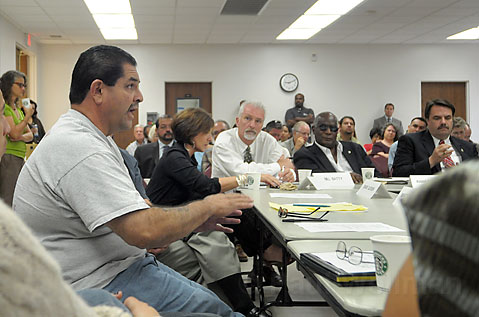
“It’s a great start,” proclaimed Santa Barbara Police Chief Cam Sanchez, who played a high-profile role in the development of the five-year plan. “Today is the first day of the beginning. It is not the answer. It is the first brick in the process.” Sanchez also warned gang members and affiliates who insisted on choosing violence that his officers would arrest them. Sanchez’s remarks were echoed by Sheriff Bill Brown, who also noted that South Coast residents are impatient for quick solutions at a time when the state and local fiscal environment was hardly encouraging. He reminded those in the room that no less than 40 percent of the county jail’s 1,200 inmates identified themselves as gang members.
While most of the community activists in attendance supported the plan in concept, some cautioned that the leadership was top-heavy with bureaucrats and politicians, while giving short shrift to nonprofits, community activists, and to young people themselves. And representatives from the Collaborative Community Foundation-a new entity created by onetime software magnate Fernand Sarrat-complained that they were being denied a seat at the table even though they have three community organizers in the field with 50 years of gang intervention under their collective belts.
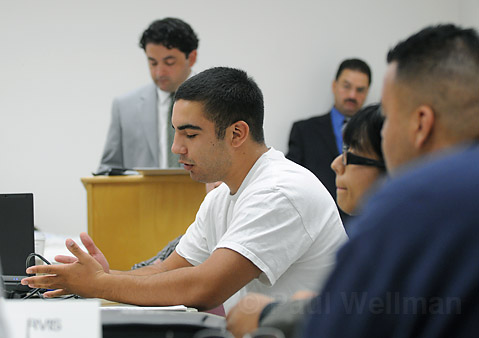
Additionally, the group heard an evaluation of the gang violence prevention efforts cobbled together by a host of interested agencies determined to keep this summer from getting any hotter than it already has. With no additional funding, these agencies diverted about five of their own staff to provide the sort of one-on-one case management endorsed as crucial to the success of any long term plan. Case worker Saul Serrano, who works with the Community Action Commission’s Los Compadres, likened the experience to building a boat while in the water. Confidentiality laws precluded Serrano and his colleagues from gaining access to the identities of the South Coast’s 101 core gang members, so they worked with 82 teens referred to them by area parents, schools, law enforcement and probation officers instead. Of these, 24 had graduated from high school while sentenced to Los Prietos Boys Camp. Of those eight lived on the South Coast; six of whom are now attending City College. Of the 82, 43 were on probation, 40 of whom managed to successfully complete the terms of their probation this summer. Of the 36 who were behind on their class credits and needed to attend summer school, 17 did so successfully. Twenty attended field trips; 230 attended mentoring sessions. But despite Santa Barbara’s much vaunted jobs program-funded for $850,000 over three years-only 10 found employment.
Through Serrano, They heard from one young man affiliated with a gang who said his case managers helped keep him out of trouble by keeping him busy. Serrano recounted the remarks made by one young man who, with a little help, got involved with the Youth Football League. “He said, ‘To be honest, I hate football, but I love it because it keeps me off the streets and keeps me out of trouble and away from my family,'” Serrano recalled. Matt Sanchez, who runs the All4One gang diversion effort, recalled that one of his charges was been picked up by police during the pre-Fiesta law enforcement sweeps. While in cuffs, the young man told police that he’d changed and that he no longer was the same person his juvenile record might indicate. “The two officers said, ‘You spoke up and you spoke well. Have a good day, go on.’ That was huge.”
Other case workers cautioned that it was difficult making up the rules as they went along, and that clear guidelines-plus more funding-would have helped. “Some promises were made that were not kept,” said Vince Castro, a 21-year-old case worker with All4One. “That hurt us, especially with the whole jobs thing.” Gloria Sanchez, a case worker with County Education, stressed the importance of building trust, stating, “Lots of students feel disconnected from the community and have been let down by so many people on so many occasions. But over the summer we were aloe to chip away at those feelings of hopelessness.”
NOTE: A previous version of this story noted that the plan would require five gang intervention specialists-at least one for every high school on the South Coast. Though five was the number originally considered, the number has since been lowered to two.

